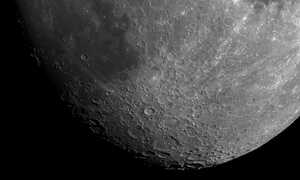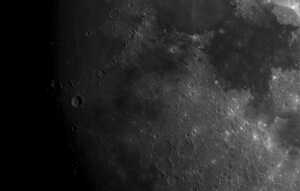A small collection of lovely photos taken by members of the Moon on the 10th June 2025.

Moon rising by John Howarth taken from Bexley.

Moon rising by Jim Burchell taken from Dartford

The Moon by Honor Wheeler taken from North Norfolk.
Astronomy every Thursday
A small collection of lovely photos taken by members of the Moon on the 10th June 2025.

Moon rising by John Howarth taken from Bexley.

Moon rising by Jim Burchell taken from Dartford

The Moon by Honor Wheeler taken from North Norfolk.
NEVER LOOK AT THE SUN DIRECTLY. Please click here for solar observing safely.
11:00 am – 3:00 pm

The CMHASD crew 2025
Member Diane Clarke wrote ''Over the weekend of 11 – 13 April 2025 several members of the CMHASD attended the BAA Winchester weekend at Sparsholt College. The event was well attended with approximately 120 members of the BAA. The weekend started with a talk about the BepiColumbo mission from Professor David Rothery and ended with a presentation of “The Winchester Report” by Crayford’s very own 'Men in Brown Coats'.
The Alfred Curtis memorial lecture “We are made of star stuff” was given by Professor Dame Joycelyn Bell Burnell. The Professor’s presentation included same exam answers from American students such as – “H20 is hot water” & “CO2 is cold water” as well as – “Water is composed of two gins Oxygin & Hydrogin” Oxygin is pure gin, “Hydrogin is water & gin”
After the lecture She took some questions, and is seen here answering a two-part question from member John Archer, the first part of John’s question - “How does one address Dame Jocelyn” to which the reply was “Jocelyn”.

Before Joycelin gave the lecture the BAA president Ms Janice McClean read from the late Storm Dunlop’s appreciation of the life of Alfred Curtis 1901 -1976 to give the attendees an illustration of who he was.


Alfred “Alf” Curtis lived in Winchester, he was a fellow of the RAS and started the BAA “Winchester Weekend” which was originally held at King Alfreds College now known as The University of Winchester. The first weekend taking place in 1967 with 56 attendees. The weekends proved so popular that by 1976 the number had risen to 242, so the BAA relocated from King Alfreds to Sparsholt Collage in 2007.
There were also presentations from:
Professor Tony Freeth talking about the Antikythera Device.
Prof Mike Edwards delivered a lecture on the chemical makeup of other worlds.
Prof Boris Gänicke spoke about how Worlds will end including the end of the Earth when the Sun swells to become a red giant.
There was also a talk about the current range of “Smart Telescopes” given by Mr Steve Knight.
Professor Lucie Green gave a presentation about observing solar eclipses from space with the ESA PROBA 3 pair of satellite’s that were launched on the 05.12.24 and is currently going through various test phases before first light is received.
During the members session on Sunday afternoon, there were several contributions including:
Mark Radice’s presentation about stargazing in Namibia.
Nicky Fleet asking when is a Shower “not a Shower” related as to how the popular press promote meteor events such as the Perseid’s
“The Winchester Report” given by CMHASD members David Grist, Steve Floodgate & Gary Hunt.

All in all, a very varied and packed Winchester weekend.''
Below is a slideshow of photos and images members took of the weekend.
[ngg src="galleries" ids="90" display="basic_slideshow"]
Below are a super selection of images by CMHASD members of our Moon between the 2nd and 8th April 2025.
The Moon - April 8th 2025 by Neil Webster
Waxing Gibbous at 82% illuminated.








Check out Neil's flickr page at https://www.flickr.com/photos/137388222@N05/
The Moon - 6th April 2025 by Neil Webster
Waxing Gibbous at 64% illuminated.






Check out Neil's flickr page at https://www.flickr.com/photos/137388222@N05/
The Moon - 5th April 2025 by Diane Clarke
First Quarter at 54% illuminated.

Diane took her image using a Seestar S50 smartscope
The Moon - 2nd April 2025 by Simon Dawes
Waxing Crescent at 22% illuminated.


Details of how Simon took his images are on the photos.
NEVER LOOK AT THE SUN DIRECTLY. Please click here for solar observing safely.
A superb collage of images showing our active Sun over a 4 day period (31st March to 3rd April) taken by CMHASD member Jim Burchell.

Below are the latest Exoplanet Transit observations carried out by CMHASD member and trustee Simon Dawes for the ExoClock project.

TOI-1259 A b is a gas giant exoplanet that orbits a K-type star. Its mass is 0.441 Jupiters, it takes 3.5 days to complete one orbit of its star, and is 0.0407 AU from its star. Its discovery was announced in 2021. Ref: https://science.nasa.gov/exoplanet-catalog/toi-1259-a-b/

HAT-P-56 b is a gas giant exoplanet that orbits an F-type star. Its mass is 2.31 Jupiters, it takes 2.8 days to complete one orbit of its star, and is 0.0423 AU from its star. Its discovery was announced in 2015. Ref:https://science.nasa.gov/exoplanet-catalog/hat-p-56-b/

Qatar-9 b is a gas giant exoplanet that orbits a K-type star. Its mass is 1.19 Jupiters, it takes 1.5 days to complete one orbit of its star, and is 0.0234 AU from its star. Its discovery was announced in 2019. Ref:https://science.nasa.gov/exoplanet-catalog/qatar-9-b/

Qatar-8 b is a gas giant exoplanet that orbits a G-type star. Its mass is 0.371 Jupiters, it takes 3.7 days to complete one orbit of its star, and is 0.0474 AU from its star. Its discovery was announced in 2019. Ref:https://science.nasa.gov/exoplanet-catalog/qatar-8-b/

WASP-92 b is a gas giant exoplanet that orbits an F-type star. Its mass is 0.805 Jupiters, it takes 2.2 days to complete one orbit of its star, and is 0.0348 AU from its star. Its discovery was announced in 2016. Ref: https://science.nasa.gov/exoplanet-catalog/wasp-92-b/


Member Richard Bohner who lives in Arizona, USA took these two lovely photos of the Total Lunar Eclipse on the 14th March 2025.


On March 14, 2025, a total lunar eclipse, visible as a partial eclipse in the UK occurred during the early morning hours. Below are a selection of images that members took of the event from the UK.
By Jim Burchell



By Jo Southgate using an iPhone

And by CMHASD trustee Keith Rickard using a camera phone


NEVER LOOK AT THE SUN DIRECTLY. Please click here for solar observing safely.
A splendid selection of Sunspot images taken by CMHASD trustee Simon Dawes on the 16th March 2025. Details of how Simon took his images are on the photos.






